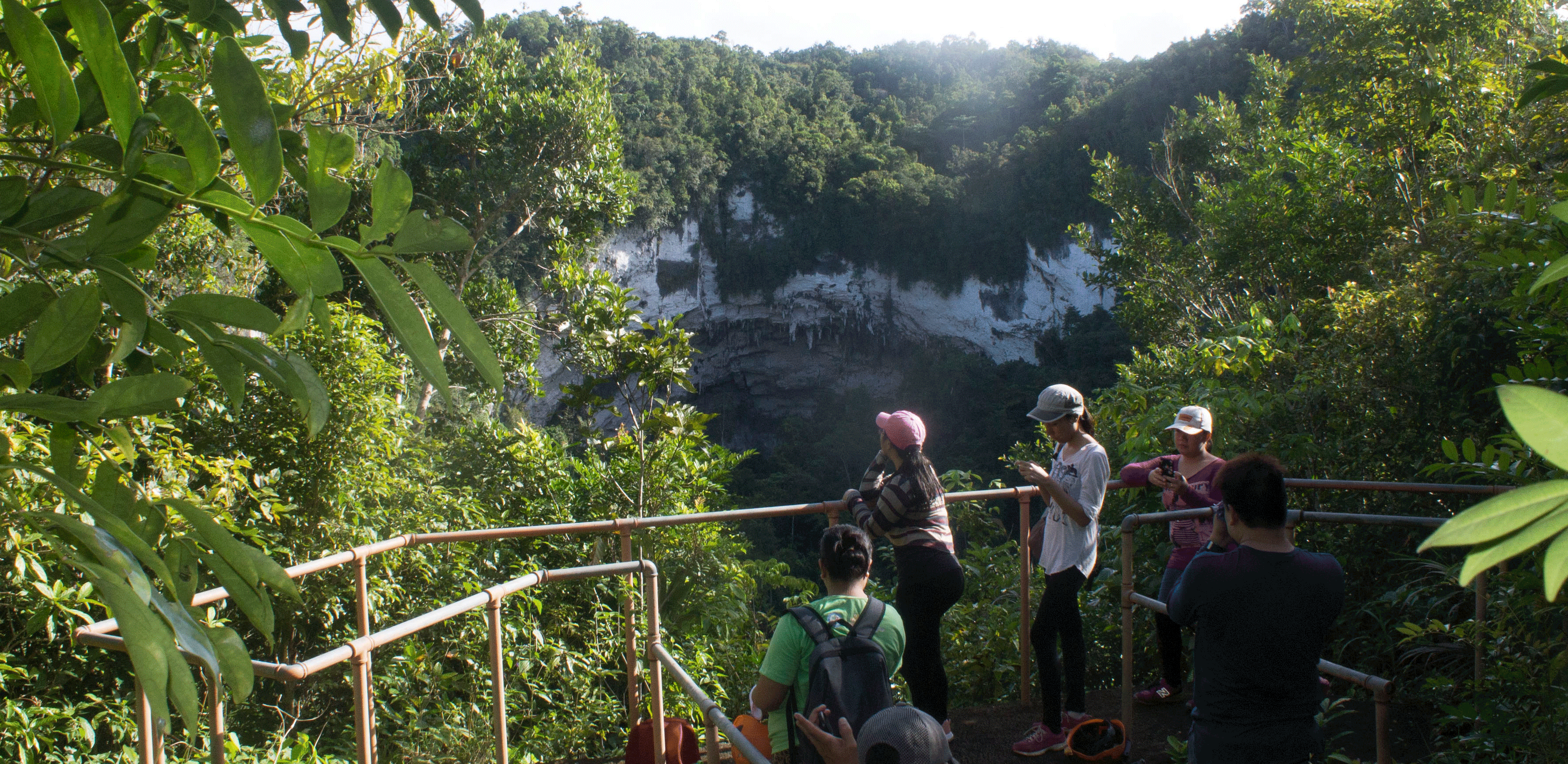

Existing
ECOTOURISM
SITES
The largest cave system in the Philippines, reputed to be the second largest in Asia and the world's third largest karst formation. It is 7 kilometers from the poblacion center and 3 kilometers from Barangay Panayuran. It has a total length of 7.5 kilometers where the main gallery measures 5 kilometers in length, 50 meters in height and about 40 meters in width. These are first explored on 1987 by Italian geologists and again by French team of spelunkers on April 2000. They have a distinctive features of magnificent rock formations, astonishing ground spaces and underground water courses.
The
LULUGAYAN
FALLS
It's thunderous curtain of water spilling into multi-level pools in the Calbiga River is worth the short trek through the hilly forest. Visitors can swim in the pools, walk on the water falls or relax in the cottages just beside it.
The
CALBIGA
RIVER
Calbiga River has an estimated width of 50 meters and a length of 20 kilometers more or less extending from southeastern portion to the western boarder, the Maqueda Bay. It serves the Poblacion and 18 barangays not only for water transport but also as food and water source for domestic use. It is also a good venue for picnic or outing with family members and peers.
Potential Eco-tourism Sites
- CALIDONGAN LAKE
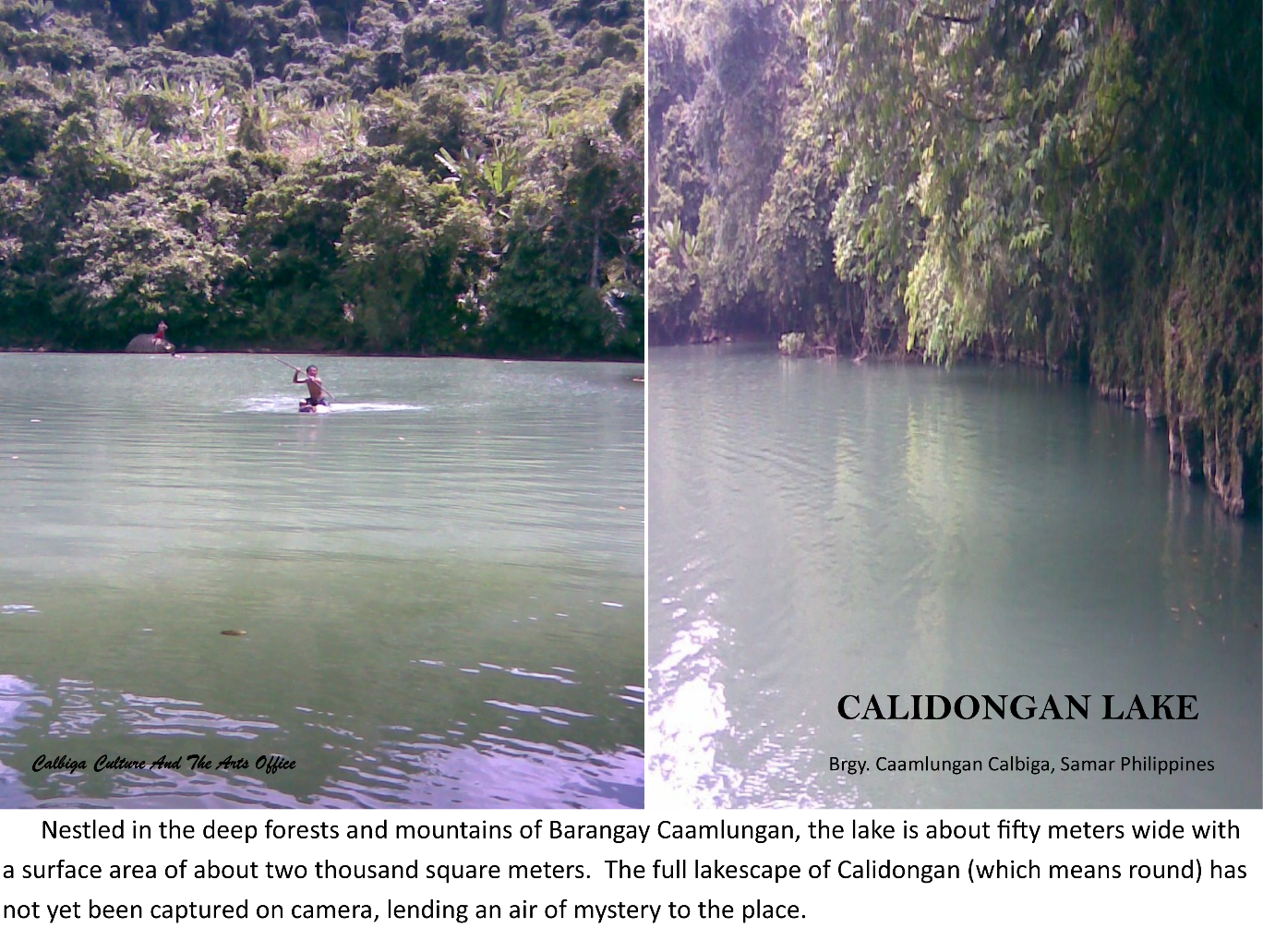






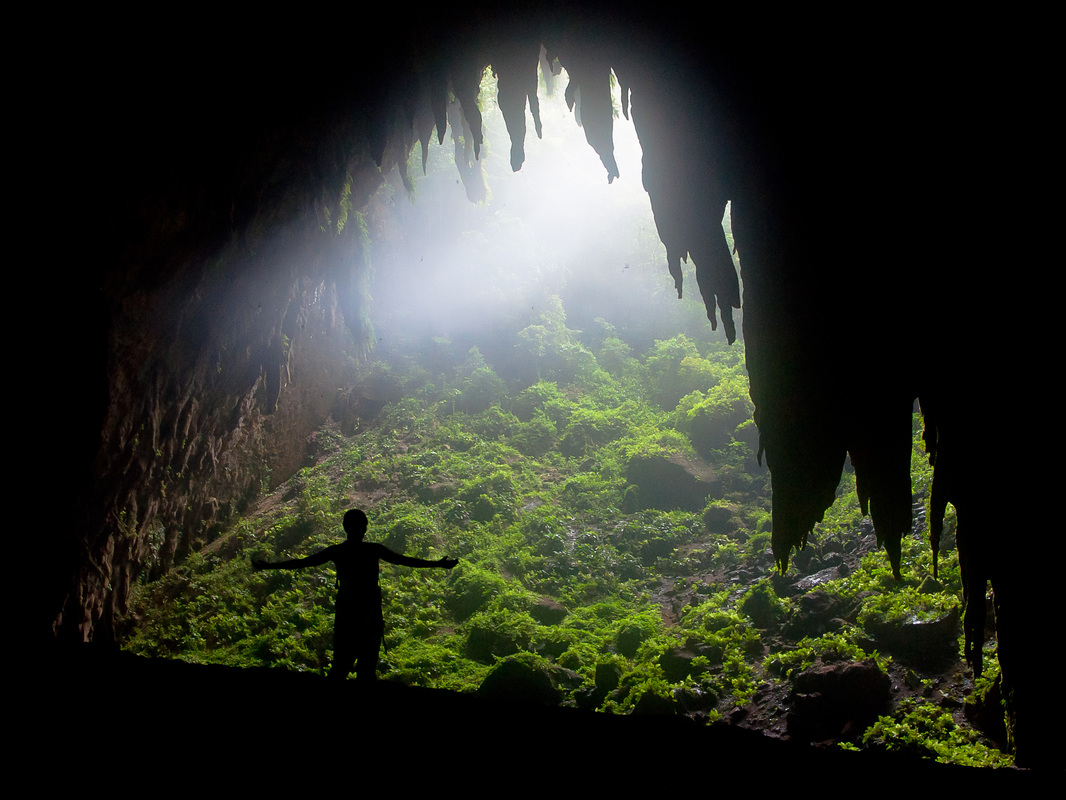
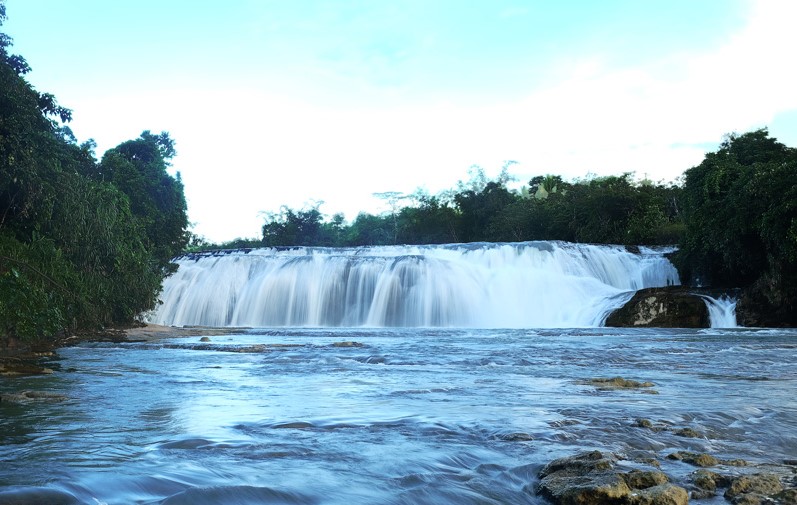
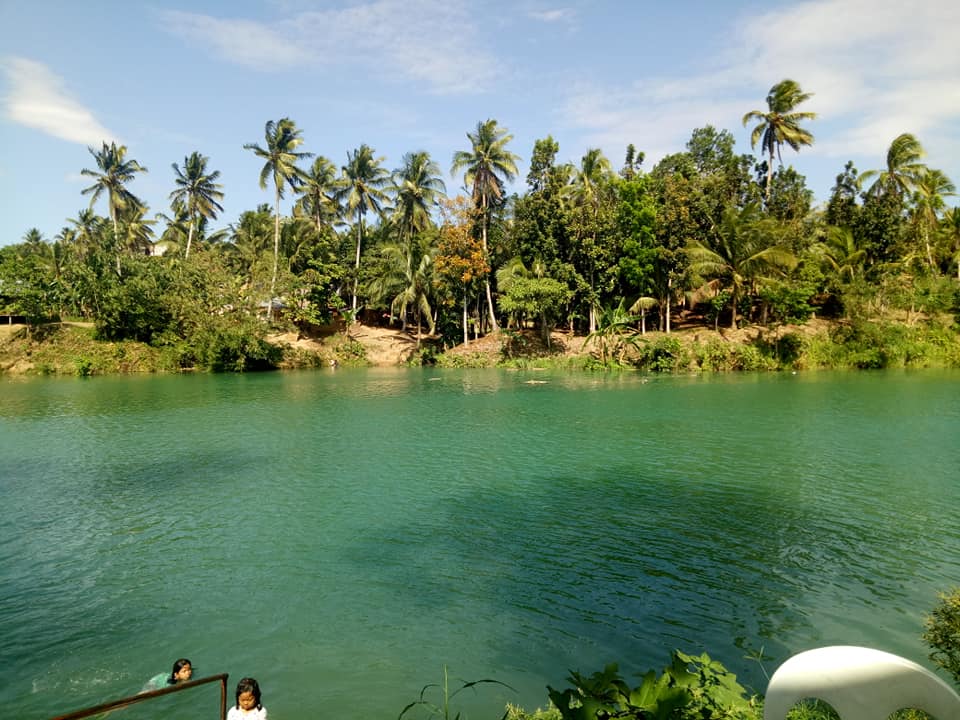




The habitat of a blind fish, Caecogobius Cryptophtalmus, first hypogean fish found in the Philippines and the gobinee known in the world measuring only 7 centimeters. White crabs are also seen walking in the galleries. This is a sample of giant tropical cave with massive limestone formations. Entrance to Langun is larger than 100 meters with numbers of giant stalactites and stalagmites and several columns. They are within the 2,968 hectares of Calbiga Caves Protected Landscape (CCPL) declared by PD No. 1126 dated November 4, 1997 during the reign of Pres. Fidel V. Ramos and is now part of the Samar Island Natural Park (SINP) declared by PD No. 442 by Pres. Gloria Macapagal-Arroyo on August 13, 2003.
This cave is situated in Barangay Caamlungan with an estimated distance of 7 kilometers from the barangay center. The total length surveyed by the Italian spelunkers was 889 meters with a vertical rage of 18 meters. There are 15 galleries with distinctive features of stalagtites and stalagmites and an underground river. Barangay Caamlungan is an upland barangay with an estimated distance of21 kilometers from the poblacion.
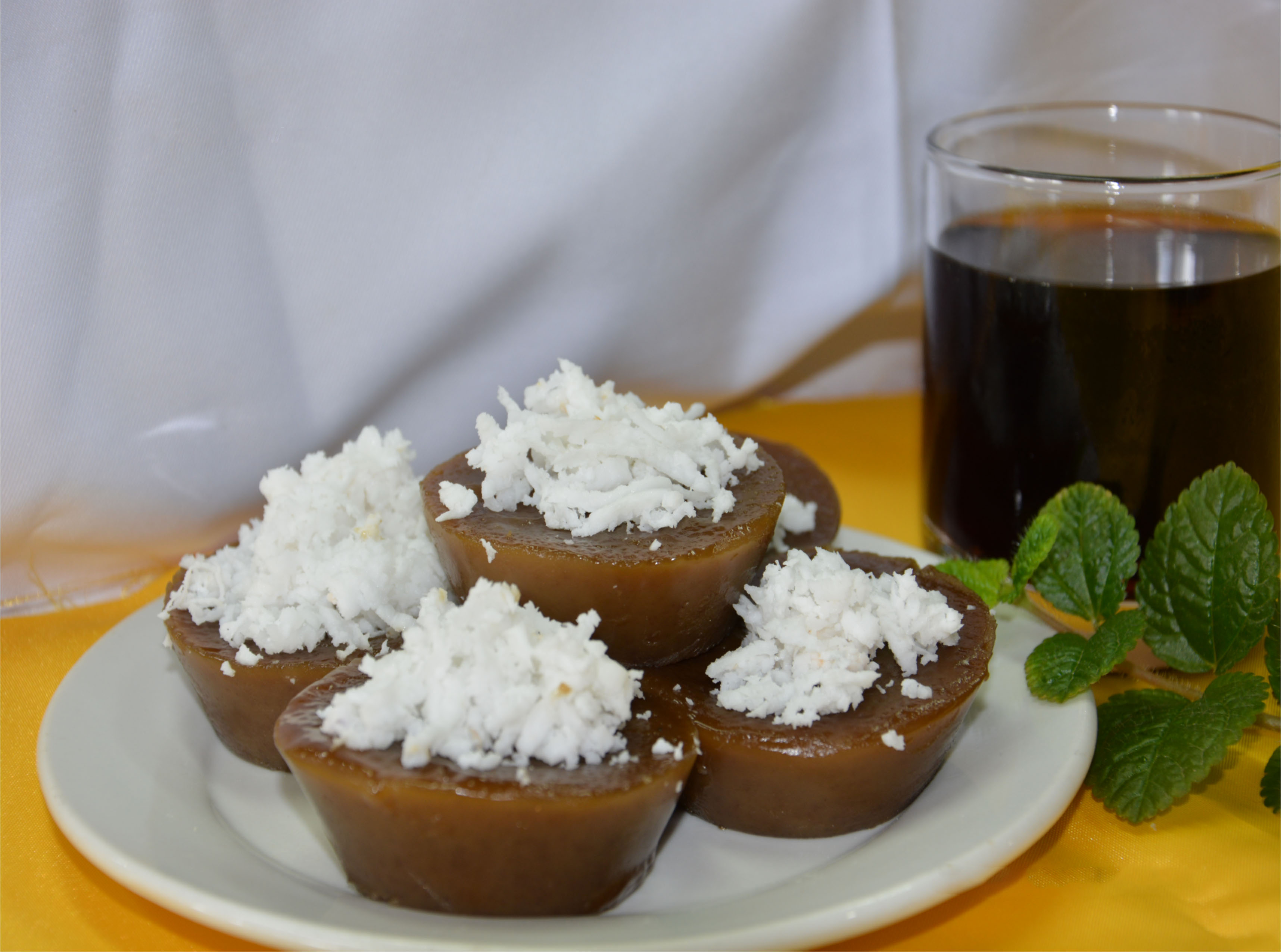
The
KUTSENTA
CALBIGA
BACKGROUND INFORMATION
TYPE:
[ ] Social Practice
[ ] Traditional Governance/Justice system
[ ] Settlement paterns
[/] Cuisine/Culinary traditions
[ ] Traditional Games/Sport
[ ] Worship rites
[ ] Rites of passage
[ ] Birth, wedding, funeral rituals
[ ] Fiesta/Festival
[ ] Kinship ceremonies
[ ] Other
Summary of the element (Description of the history of the practice, occasion/season, processes involved, procedures, beliefs associated, settings, aims and other pertinent data)
She (Petrona B. Cafe) is been helping her mother to cook kutsenta and sell them in the public market since her high school days. When she got married, she continue making kutsenta as additional source of income to support her big family. It is year round, some products are being displayed in the market everyday if not busy and some order by hundreds as pasalubong, gift for special occasions like birthday, wedding, christening and gatherings for snacks.
Ingredients:
- Flour
- Sugar
- Calamay
- Lye (lihiya)
- Grated Coconut
Procedure:
Put the flour, sugar, melted calamay and lye into the mixing bowl. Mix thoroughly then pour into the molder and steam until cooked.
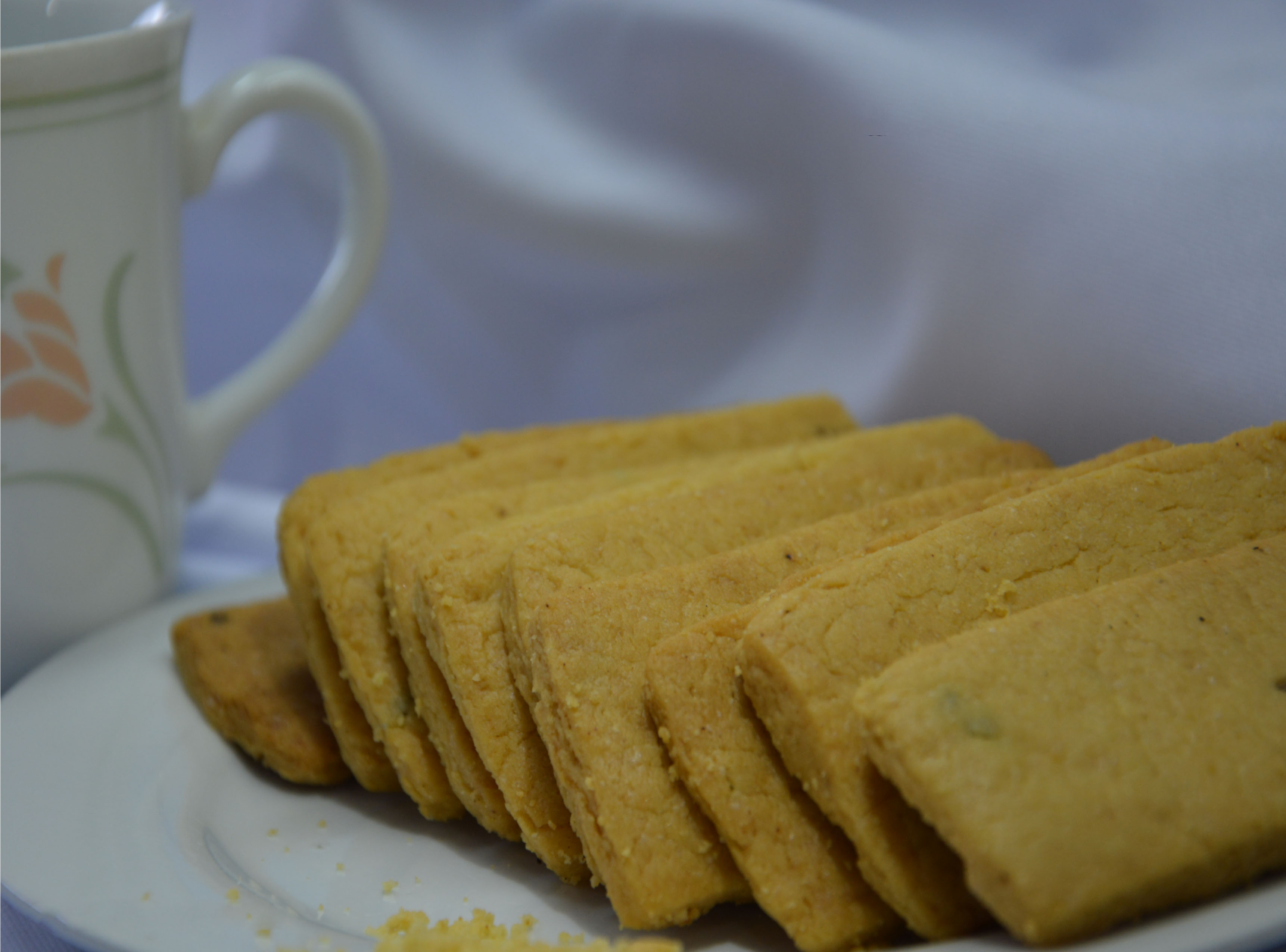
The
DECANIA
CALBIGA
BACKGROUND INFORMATION
TYPE:
[ ] Social Practice
[ ] Traditional Governance/Justice system
[ ] Settlement paterns
[ /] Cuisine/Culinary traditions
[ ] Traditional Games/Sport
[ ] Worship rites
[ ] Rites of passage
[ ] Birth, wedding, funeral rituals
[ ] Fiesta/Festival
[ ] Kinship ceremonies
[ ] Other
Summary of the element (Description of the history of the practice, occasion/season, processes involved, procedures, beliefs associated, settings, aims and other pertinent data)
They started to bake the decania since 1997. It started small business then it prosper then they hired number of workers after they registered at Department of Trade and Industry (DTI) in 2007 and avail financial assistance from the DTI course through Department of Tourism. They produced the product by order.
Ingredients:
- Flour
- Margarine
- Milk
- Sugar
- Lard
- Eggs
- Anis
Procedure:
Heat oven to 375 degrees farenhieght. Mix sugar, margarine, lard, milk and eggs in a bowl and blend. Stir in flour, calumet, salt, anis.(Dough will be stiff) Put the dough in the molder and slice/cut and place them onto the baking pan. Bake for 8 minutes or until slightly brown.

-------- ••• Culture & L ifestyle ••• --------
--------- ••• Delicacies ••• ----------

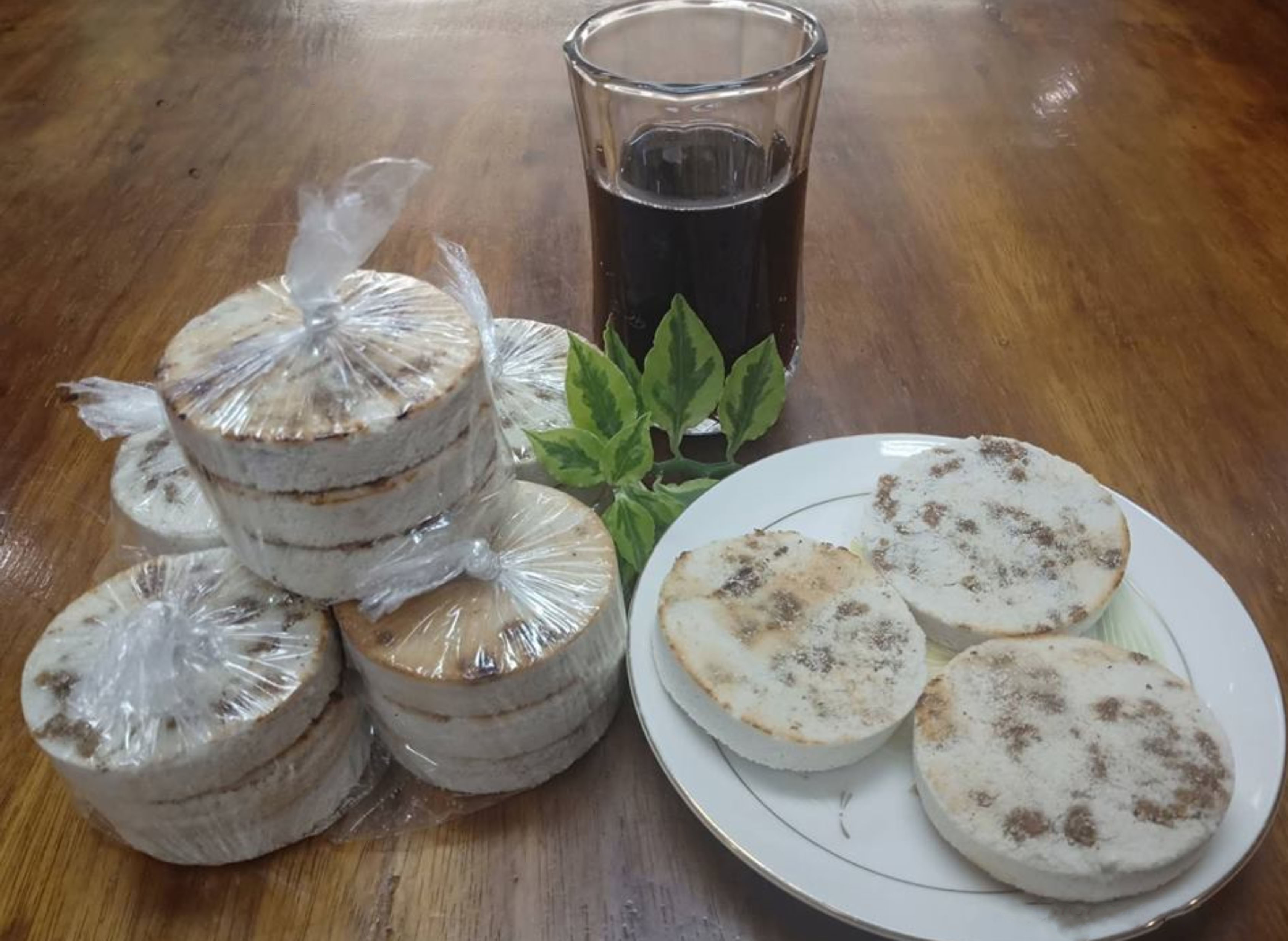
The
PUTO-LIGONG
(RICE)
BACKGROUND INFORMATION
TYPE:
[ ] Social Practice
[ ] Traditional Governance/Justice system
[ ] Settlement paterns
[ /] Cuisine/Culinary traditions
[ ] Traditional Games/Sport
[ ] Worship rites
[ ] Rites of passage
[ ] Birth, wedding, funeral rituals
[ ] Fiesta/Festival
[ ] Kinship ceremonies
[ ] Other
Summary of the element (Description of the history of the practice, occasion/season, processes involved, procedures, beliefs associated, settings, aims and other pertinent data)
Ingredients:
- Brown sugar/Calamay
- Grated coconut
- Anis
- Rice

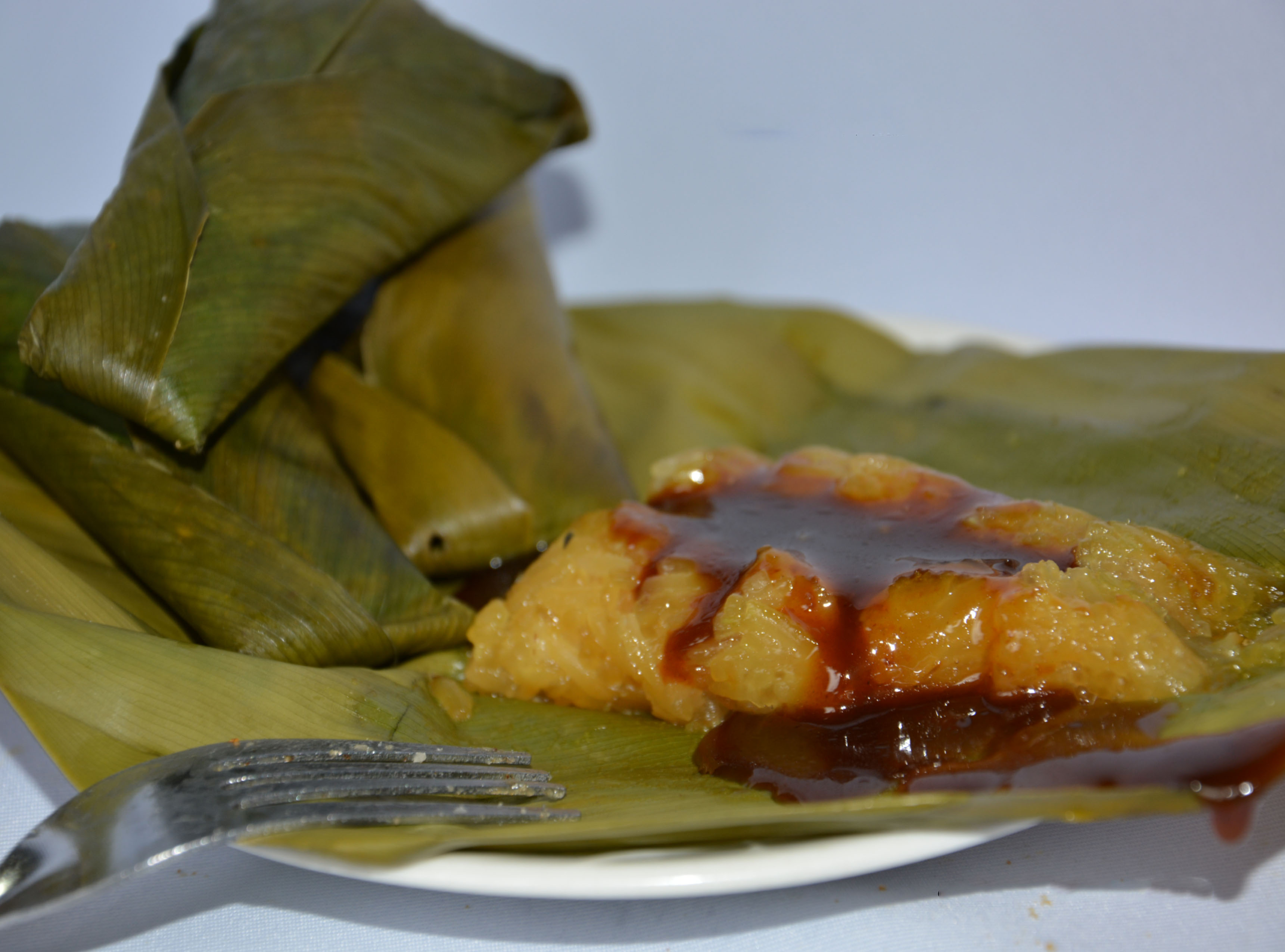
The
LINATIKAN
(SUMAN LATIK -SAMAR)
BACKGROUND INFORMATION
TYPE:
[ ] Social Practice
[ ] Traditional Governance/Justice system
[ ] Settlement paterns
[ /] Cuisine/Culinary traditions
[ ] Traditional Games/Sport
[ ] Worship rites
[ ] Rites of passage
[ ] Birth, wedding, funeral rituals
[ ] Fiesta/Festival
[ ] Kinship ceremonies
[ ] Other
Summary of the element (Description of the history of the practice, occasion/season, processes involved, procedures, beliefs associated, settings, aims and other pertinent data)
Linatikan (Suman latik-Samar) differs from others because we used the homemade lye out of firewood (bakhaw) ash and hagikhik leaves which has a distinct aromatic smell and taste that adds on flavor. It is all year round and available also in the market.
Ingredients:
- Malagkit white rice (pilit)
- Coconut milk
- Brown sugar/ Kalamay
- Lye (lihiya)
Procedure:
Rinse the white malagkit rice then put in a pan. Add lye and tap water and mix it thoroughly until halfly cooked. Drop a spoonful to the leaf (hagikhik) and wrap. Put all wrapped onto the big casserole and put water then boil until cooked Make syrup using the coconut milk and sugar/calamay; mix it thoroughly until Sticky.
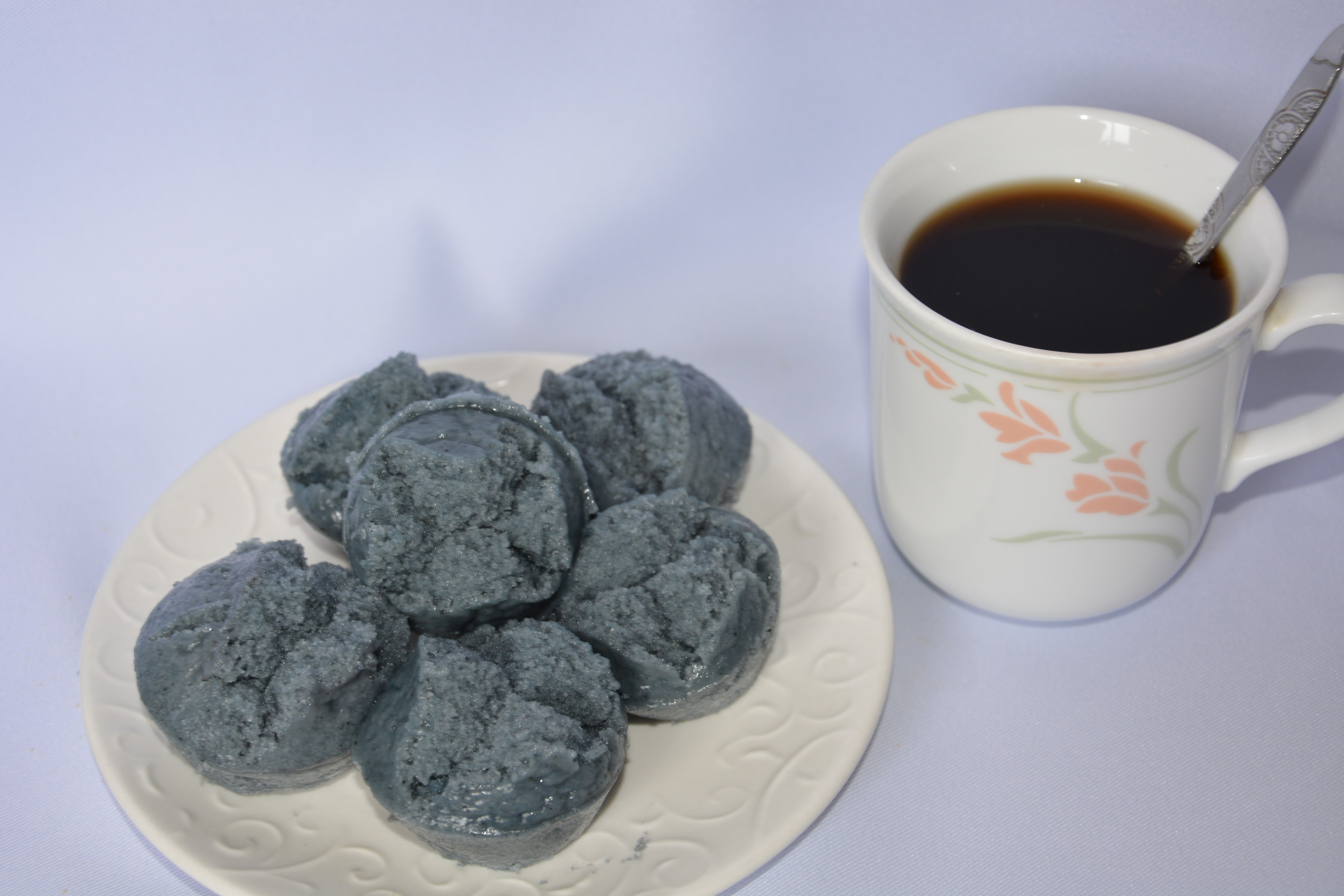

The
RICE PUTO
CALBIGA
BACKGROUND INFORMATION
TYPE:
[ ] Social Practice
[ ] Traditional Governance/Justice system
[ ] Settlement patterns
[/] Cuisine/Culinary traditions
[ ] Traditional Games/Sport
[ ] Worship rites
[ ] Rites of passage
[ ] Birth, wedding, funeral rituals
[ ] Fiesta/Festival
[ ] Kinship ceremonies
[ ] Other
Summary of the element (Description of the history of the practice, occasion/season, processes involved, procedures, beliefs associated, settings, aims and other pertinent data)
Puto in Calbiga was originally made by Mrs. Editha Daradal whom is the mother-in-law of Mrs. Socorro Daradal who is the present puto-maker in town. She started by making kutsinta, and tried making rice puto through trial and error until it was perfectly well-done. Then, she stopped cooking at the time that she became sickly. The knowledge was handed down to her daughter-in-law at the age of 26 years old as a means of livelihood to support the studies of her children. This practice is being made all through-out the year especially when there are occasions such as christening, birthdays, weddings, fiesta, seminars, etc.
To begin with the process, Mrs. Socorro Daradal prepares equipments and ingredients needed for cooking. This includes:
Ingredients:
- 1. Rice (ordinary) 3 cups
- 2. Malagkit Rice 1 cup
- 3. Sugar, white ¼ kl
- 4. Coconut Milk 5 cups
- 5. Baking Soda (Calumet) 1/3 cup
Equipments:
1. Steamer 6. mixer
2. Molder 7. Grinder Coconut
3. Basin 8. Grinder for Rice
4. Pitcher 9. Stove
5. Strainer
Procedures:
Step 1: Soak the ordinary rice and malagkit rice separately for 30 mins
Step 2: Rinse each type of rice for 2 times
Step 3: Mix the 2 types of rice
Step 4: Pour the 5 cups of Coconut milk to mixed rice
Step 5: Start grinding to form a thick batter or until smooth and no traces of rice bits.
Step 6: Pour it back to the bowl and add white sugar then blend.
Step 7: Add baking powder then mix it again and gradually add coconut milk to the mixture until the desirable consistency is achieved
Step 8: Strain the mixture to the pitcher in preparation to be transferred into the molder
Step 9: Then, pour the mixture to the molders
Step 10: Place it to the streamer when at boiling point.
Step 11: Cook for 15 minutes
The
KURUKOD SINAMAY
INASINAN
BACKGROUND INFORMATION
TYPE:
[ ] Social Practice
[ ] Traditional Governance/Justice system
[ ] Settlement paterns
[/] Cuisine/Culinary traditions
[ ] Traditional Games/Sport
[ ] Worship rites
[ ] Rites of passage
[ ] Birth, wedding, funeral rituals
[ ] Fiesta/Festival
[ ] Kinship ceremonies
[ ] Other

Summary of the element (Description of the history of the practice, occasion/season, processes involved, procedures, beliefs associated, settings, aims and other pertinent data).
She started to cooked kurokod after the death (2007) of her husband as source of income to support her family needs. They have plenty of raw material ( Malagkit Rice) and availability of hagikhik leaves in their farm. It is available in the market every morning and receive order by hundreds to all occasions.
Ingredients:
Malagkit Rice (Black &white)
Sugar
Coconut Milk
Ginger
Salt
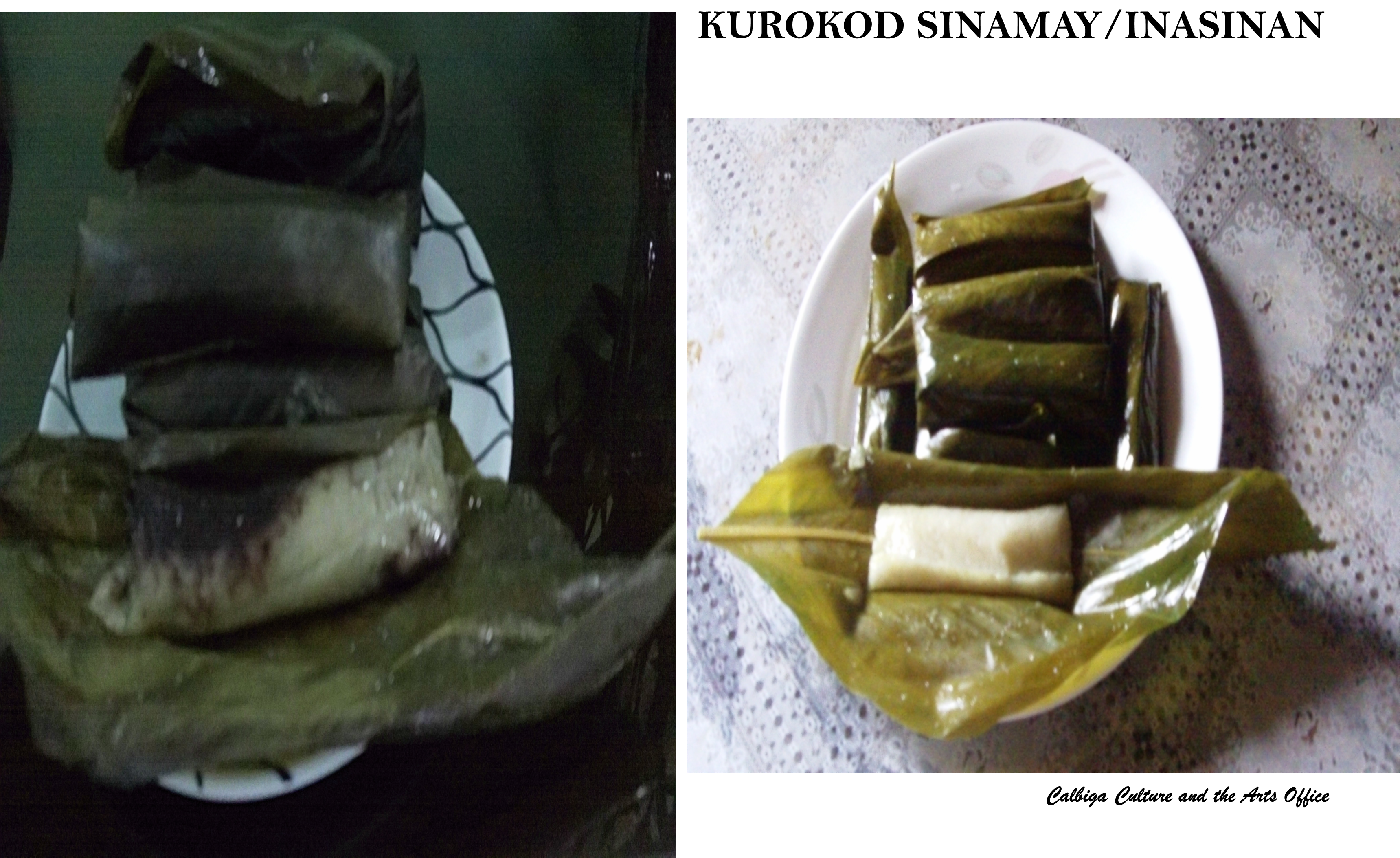



Procedure:
1. Rinse the malagkit rice separately the black & white. Put the white malagkit rice in a pan, pour coconut milk, add salt and mince ginger. Mix it thoroughly until slightly cook.
2. Put the black malagkit rice in a pan, pour coconut milk and sugar. Mix it thoroughly until slightly cook.
3. Wrap it with hagikhik leaf and put in the kettle. Pour water and let it boil until cooked.
The
HOPIA DE
PILI
BACKGROUND INFORMATION
TYPE:
[ ] Social Practice
[ ] Traditional Governance/Justice system
[ ] Settlement paterns
[ /] Cuisine/Culinary traditions
[ ] Traditional Games/Sport
[ ] Worship rites
[ ] Rites of passage
[ ] Birth, wedding, funeral rituals
[ ] Fiesta/Festival
[ ] Kinship ceremonies
[ ] Other
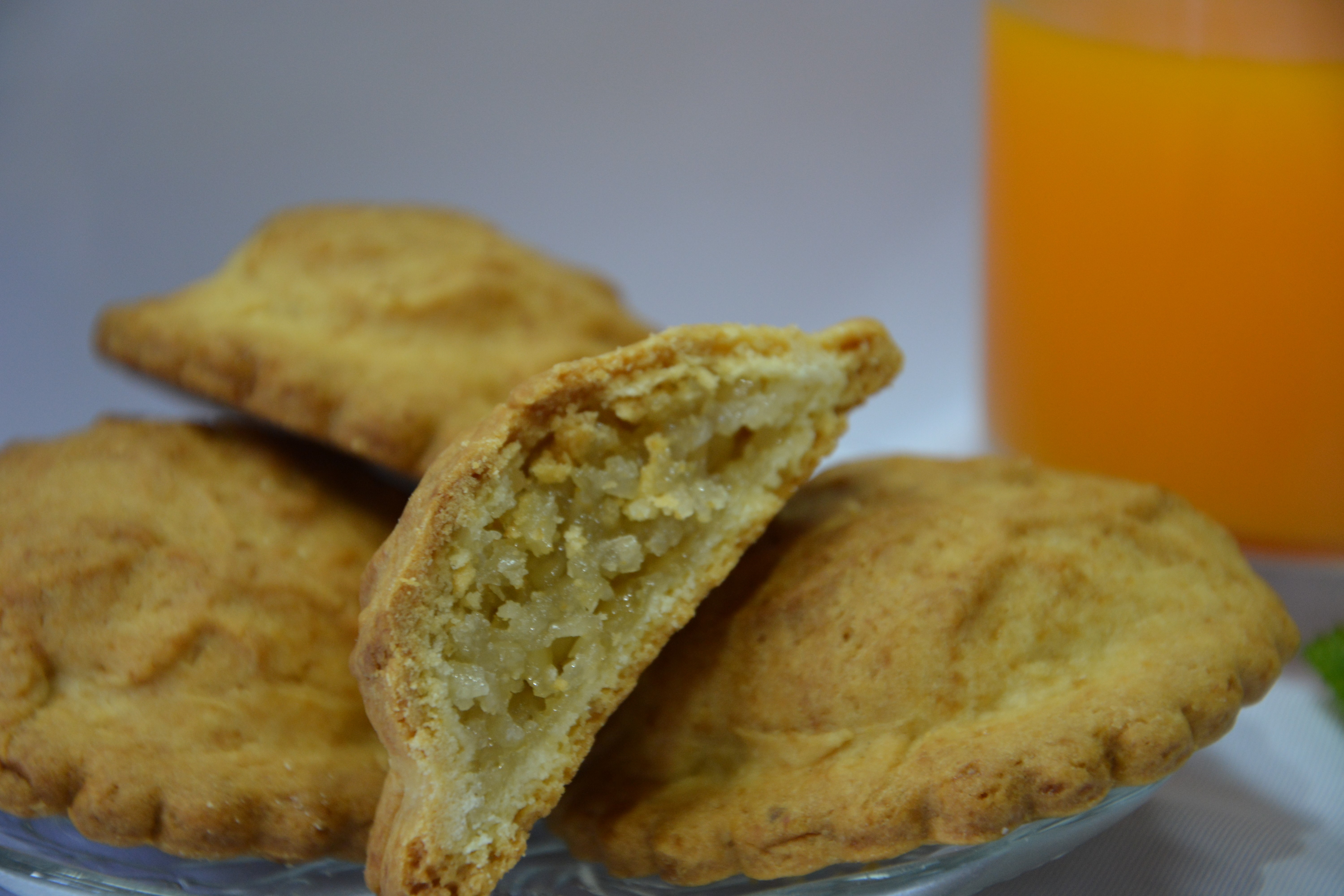
Summary of the element (Description of the history of the practice, occasion/season, processes involved, procedures, beliefs associated, settings, aims and other pertinent data)
Bakpia or Hopia is a popular Indonesian and Phillipine bean-filled moon cake-like pastry originally introduced by Fujianese immigrant in the urban centers of both nation around the turn of twentieth century. It is widely available inexpensive treat and favored gift for families, friends and relatives. Hopia de pili is a Calbiganon cookie-dough type shape like corioso filled with a sweet grinded/ mashed pili nuts, that taste of a marriage of culture that melt in your mouth. It is expensive special gift and you can have it by order of one hundred eighty pesos per pack of ten pieces at the source while two hundred pesos at display stores.
Ingredients:
Pili nuts
Sugar
Evaporated milk
Lard
Star Margarine
Flour
Filling:
Grind/mash the pili nuts.
Make syrup by using water and white sugar, milk and blend.
Add pili nuts and mix it thoroughly.
Procedure:
Heat oven to 375 degrees Fahrenheit. Mix sugar, margarine, lard, milk and eggs in a large bowl and blend it well.nAdd flour, calumet and salt. Mix it thoroughly. Dough will be stiff. Drop dough by rounded tablespoon onto ungreased cookies sheet. Put the filling (pili nuts) Use a cutter design to remove from cookies sheet then place it in a baking pan. Bake for 8minutes or until light brown.

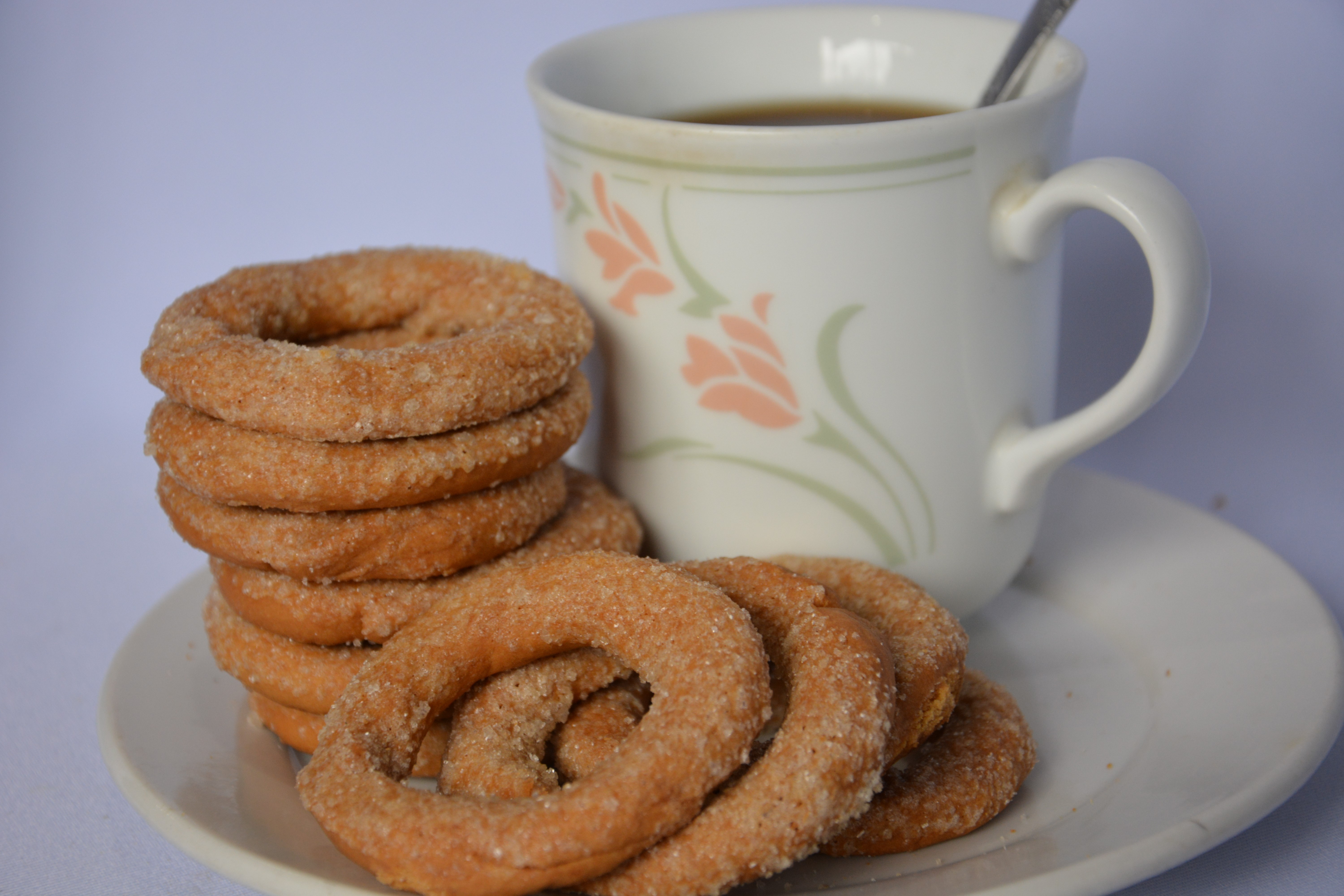
The
ROSCAS de
CALBIGA
BACKGROUND INFORMATION
TYPE:
[ ] Social Practice
[ ] Traditional Governance/Justice system
[ ] Settlement paterns
[/] Cuisine/Culinary traditions
[ ] Traditional Games/Sport
[ ] Worship rites
[ ] Rites of passage
[ ] Birth, wedding, funeral rituals
[ ] Fiesta/Festival
[ ] Kinship ceremonies
[ ] Other
Summary of the element (Description of the history of the practice, occasion/season, processes involved, procedures, beliefs associated, settings, aims and other pertinent data)
The practice of baking roscas started 13 years ago up to the present, it is a year round, pre order by hundreds. It can be served as snack, a token or gift.
Ingredients:
Flour
Margarine
Lard
Sugar (white)
Evaporated Milk
Procedure:
Heat oven degrees to 375 Farenheit Mix sugar, milk, lard, margarine and egg yolk in a large bowl and blend.
Stir the flour until the dough will be stiff. Drop dough by rounded tablespoon onto the table, roll then cut 5 inches
meet the ends to form a circle then roll with sugar before putting to the baking pan. Bake for 8 minutes or until slightly brown.

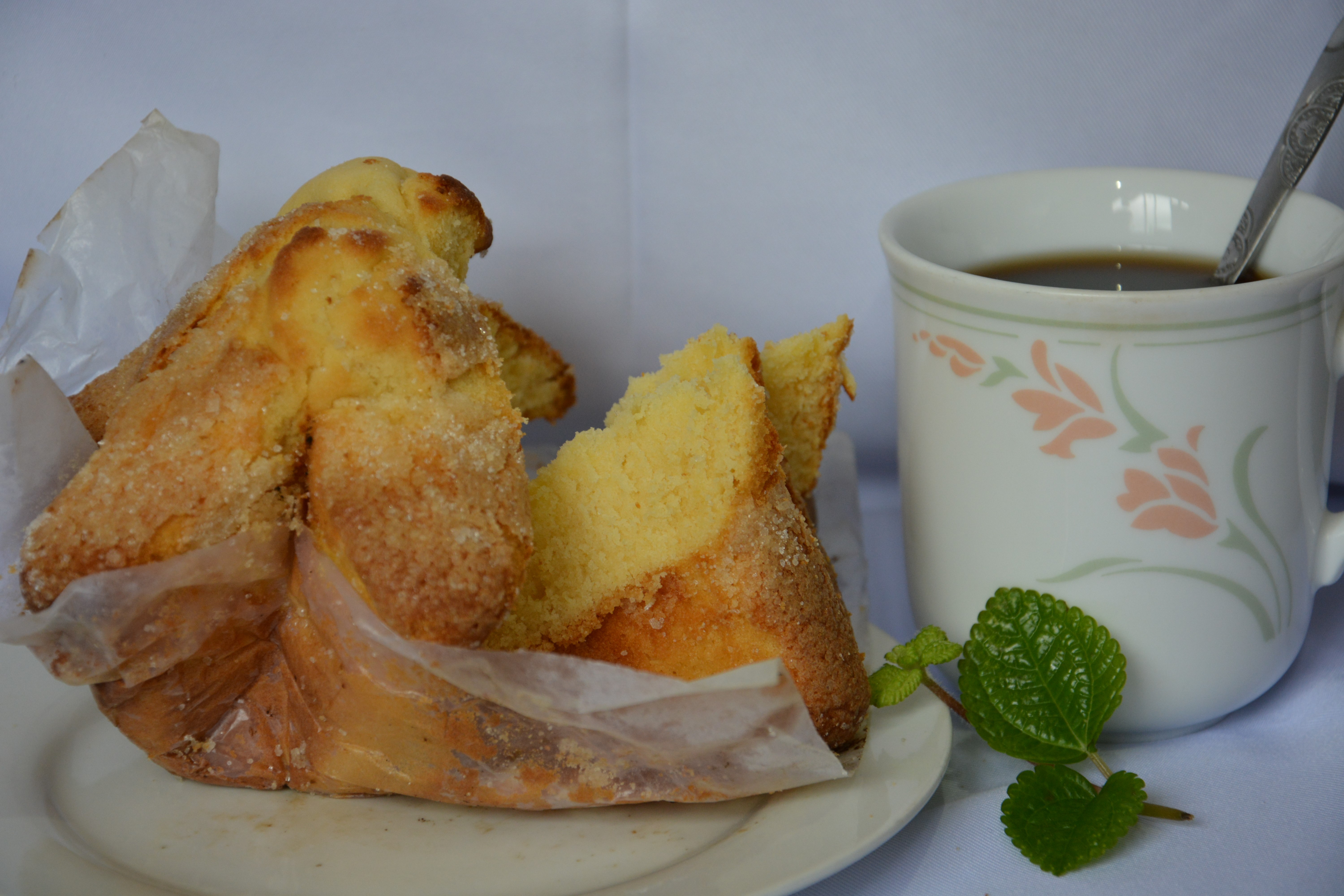
The
SPECIAL SAMAR
TORTA
BACKGROUND INFORMATION
TYPE:
[ ] Social Practice
[ ] Traditional Governance/Justice system
[ ] Settlement paterns
[/] Cuisine/Culinary traditions
[ ] Traditional Games/Sport
[ ] Worship rites
[ ] Rites of passage
[ ] Birth, wedding, funeral rituals
[ ] Fiesta/Festival
[ ] Kinship ceremonies
[ ] Other
Summary of the element (Description of the history of the practice, occasion/season, processes involved, procedures, beliefs associated, settings, aims and other pertinent data).
The cuisine was introduced to us during the Spanish - era. Her mother was the one who run the business of different delicacies of Calbiga. He continue managing their business after his mother's death last year 20017. They supplied products in other places. It is year round, accepts order by volume.
Ingredients:
Flour
Sugar
Calumet
Eggs
Lard
Margarine
Evaporated milk
Procedure:
Put the lard, margarine, white sugar and mix thoroughly. Add the eggs, milk, Lard and water.
Stir evenly. In a separate bow, put the flour, calumet and stir. Drop flour little by little and mix thoroughly in one direction.
Pour into the torta pan then onto the baking pan. Bake 350 degrees F (175degrees C)

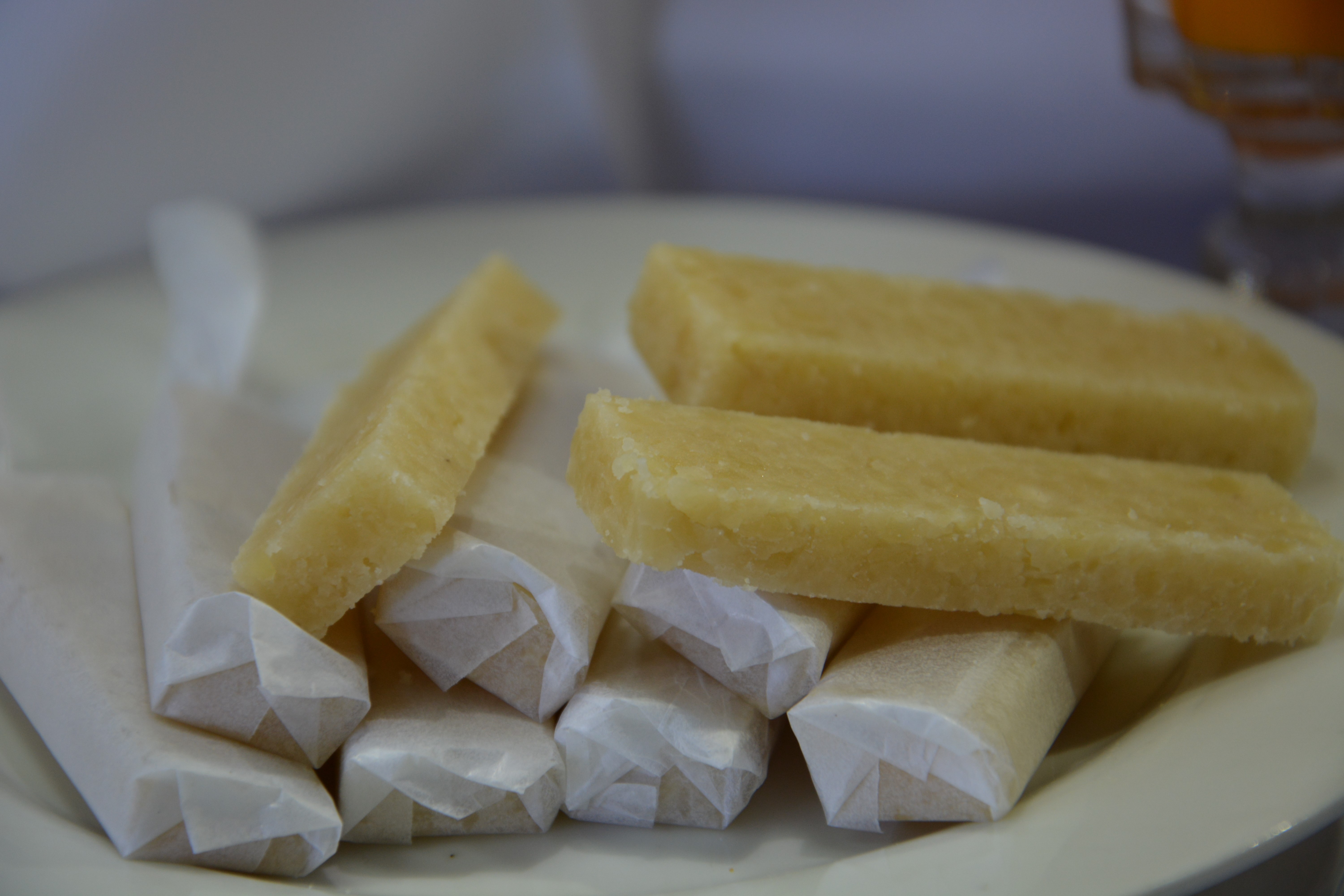
The
MASAPAN
DE PILI
BACKGROUND INFORMATION
TYPE:
[ ] Social Practice
[ ] Traditional Governance/Justice system
[ ] Settlement paterns
[/] Cuisine/Culinary traditions
[ ] Traditional Games/Sport
[ ] Worship rites
[ ] Rites of passage
[ ] Birth, wedding, funeral rituals
[ ] Fiesta/Festival
[ ] Kinship ceremonies
[ ] Other
Summary of the element (Description of the history of the practice, occasion/season, processes involved, procedures, beliefs associated, settings, aims and other pertinent data)
It is delicious and chewy in every bite, made of grinded/mashed pili nuts served as dessert. Also as a gift/ token to friends, relatives and visitors/guests. It is all year round depends on the availability of raw (pili nuts) materials.
Ingredients:
Pili nuts
White sugar
Water
Procedure:
Soak pili nuts in hot water (without the shell). Remove the peelings.
Rinse with tap water. Grind the pili nuts.nnMake syrup (water & sugar) until it has a glutinous consistency.
Mix the grounded pili nuts until sticky. Place it in the molder, slice then let it cool before wrapping.

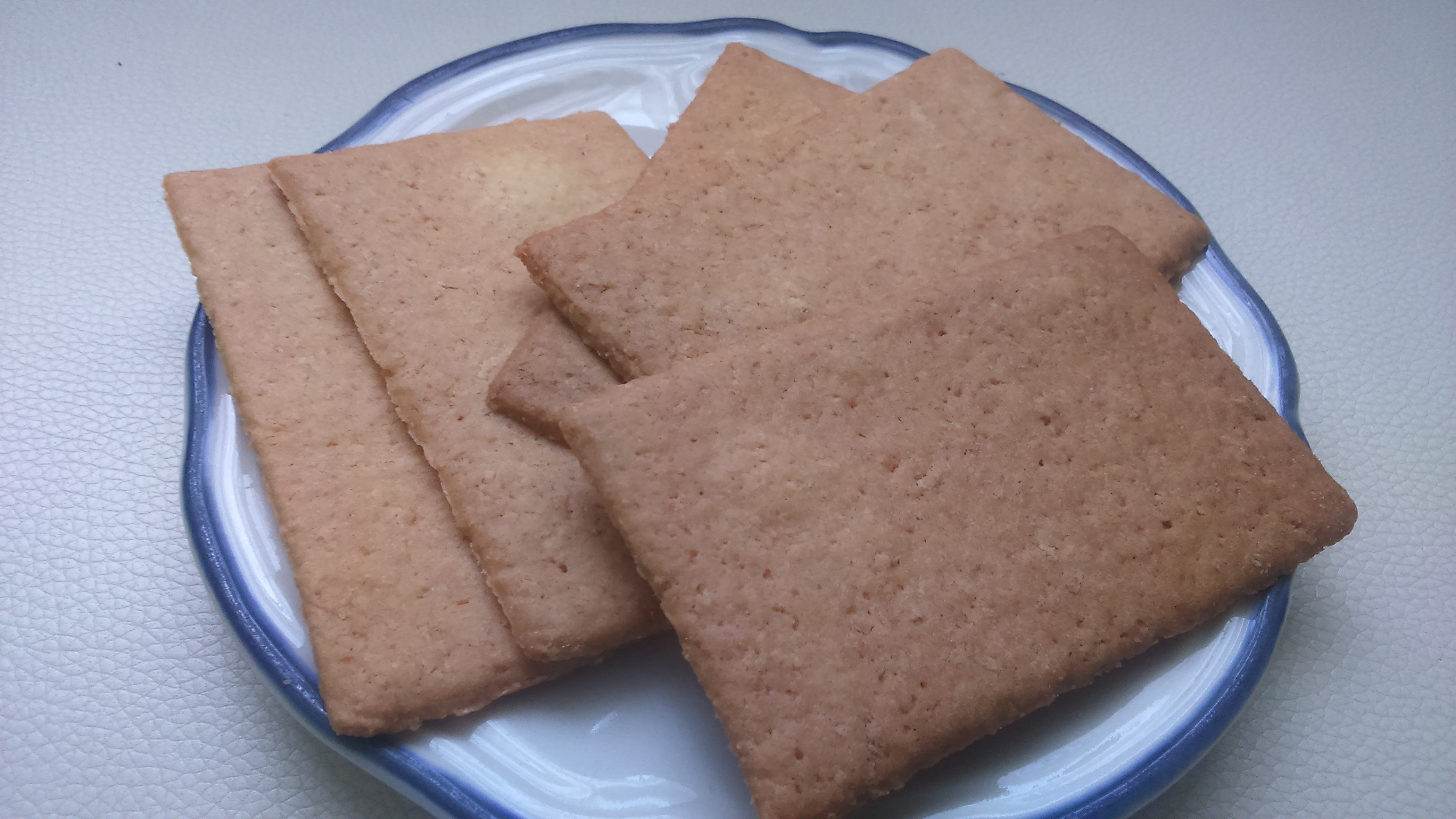
The
SALVARO de
CALBIGA
BACKGROUND INFORMATION
TYPE:
[ ] Social Practice
[ ] Traditional Governance/Justice system
[ ] Settlement paterns
[/] Cuisine/Culinary traditions
[ ] Traditional Games/Sport
[ ] Worship rites
[ ] Rites of passage
[ ] Birth, wedding, funeral rituals
[ ] Fiesta/Festival
[ ] Kinship ceremonies
[ ] Other
Summary of the element (Description of the history of the practice, occasion/season, processes involved, procedures, beliefs associated, settings, aims and other pertinent data)
Ingredients:
Flour
Brown sugar
Grated coconut
Calumet
Margarine
Procedure:
Mix all the ingredients in the aluminum mixing basin; mix it thoroughly and Let it rise for one hour or more. Then put the mixture in a molder and slice it, the desired size and shape. Place it in the pan then bake until.

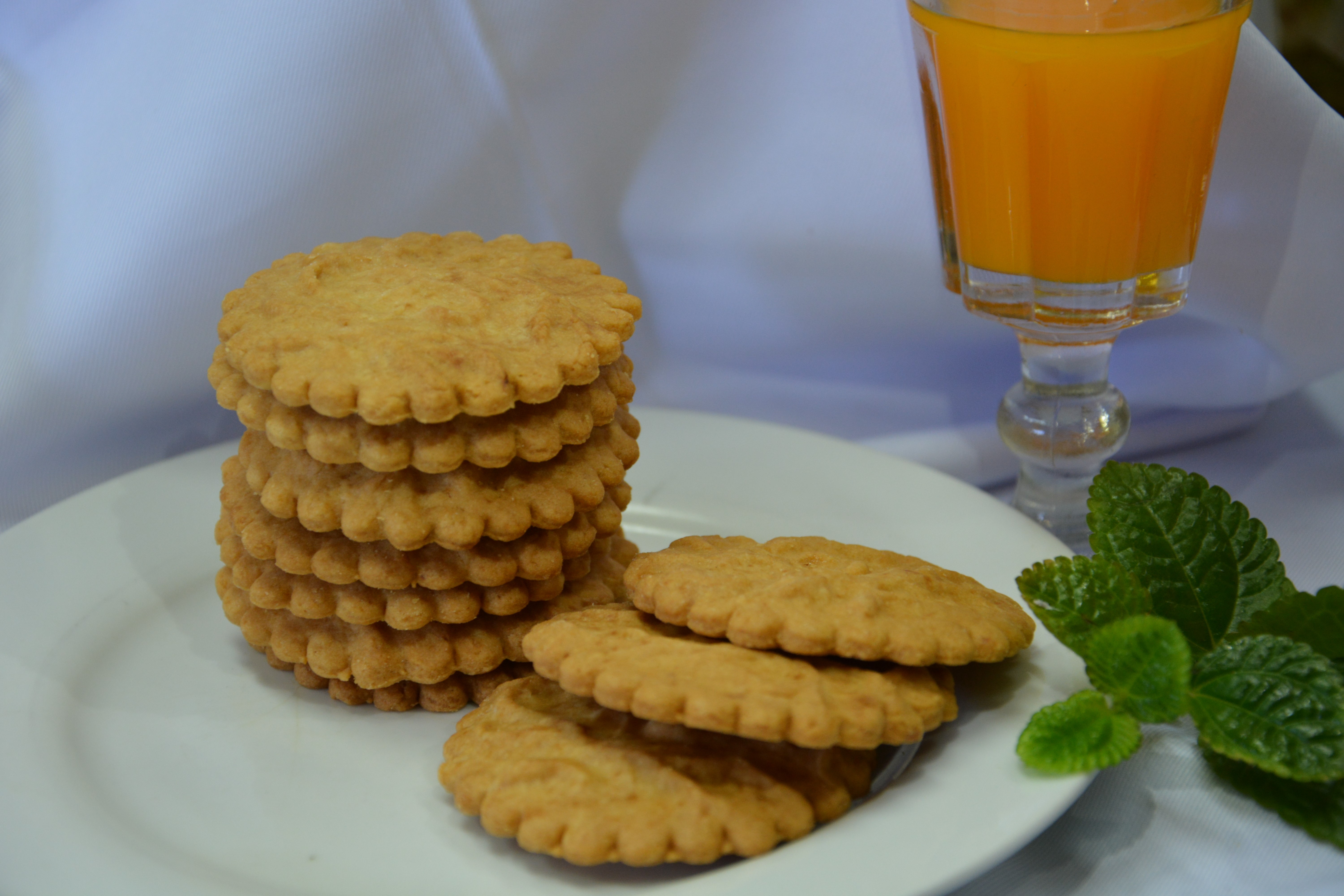
The
CORIOSO
CALBIGA
BACKGROUND INFORMATION
TYPE:
[ ] Social Practice
[ ] Traditional Governance/Justice system
[ ] Settlement paterns
[/] Cuisine/Culinary traditions
[ ] Traditional Games/Sport
[ ] Worship rites
[ ] Rites of passage
[ ] Birth, wedding, funeral rituals
[ ] Fiesta/Festival
[ ] Kinship ceremonies
[ ] Other
Summary of the element (Description of the history of the practice, occasion/season, processes involved, procedures, beliefs associated, settings, aims and other pertinent data)
She started her small business as additional income aside of her main job as beautician. She was encouraged to learn how to bake cookies by her mother-in-law when her family become big in order to have additional source of income to support her family. She is now more than twenty years in the business of selling delicacies to the different towns. She accepts orders by hundreds or by volume.
Ingredients:
Flour
Sugar
Milk
Margarine
Calumet
Eggs
Procedure:
Heat oven degrees to 375 Fahrenheit. Mix sugar, milk, lard, margarine and egg yolk in a large bowl and blend. Stir the flour until the dough will be stiff. Drop dough by rounded tablespoon onto ungreased cookies sheet. Use the cookie cutter, remove from cookies sheet and place it in the baking pan. Bake for 8 minutes or until slightly brown.

GOVERNMENTS LINKS EMERGENCY NUMBERS CONTACT US
Copyright 2019 City Government Calbiga
________________________________________________________________________________________________________________________________________________________________
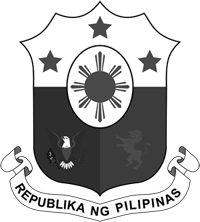


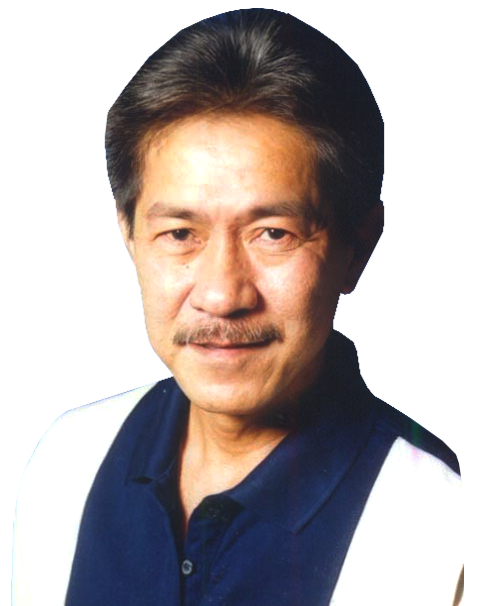






MELCHOR F. NACARIO
MUNICIPAL MAYOR
